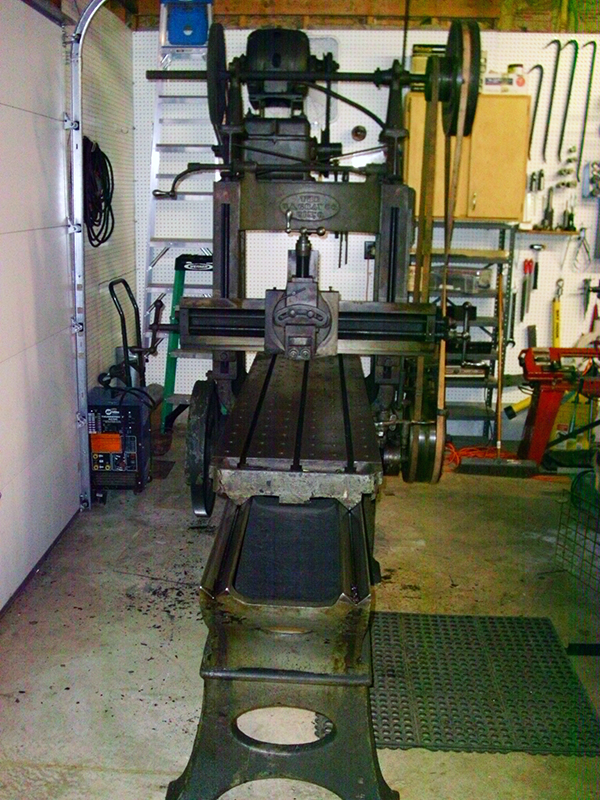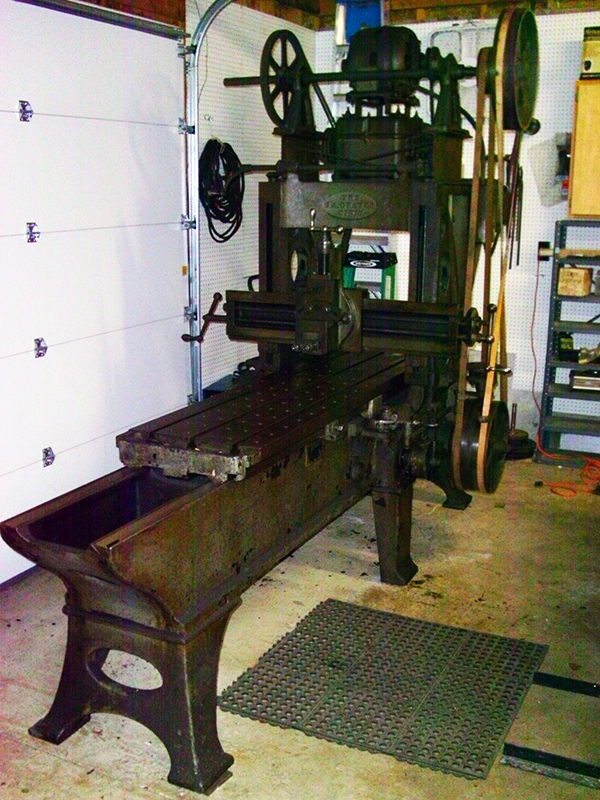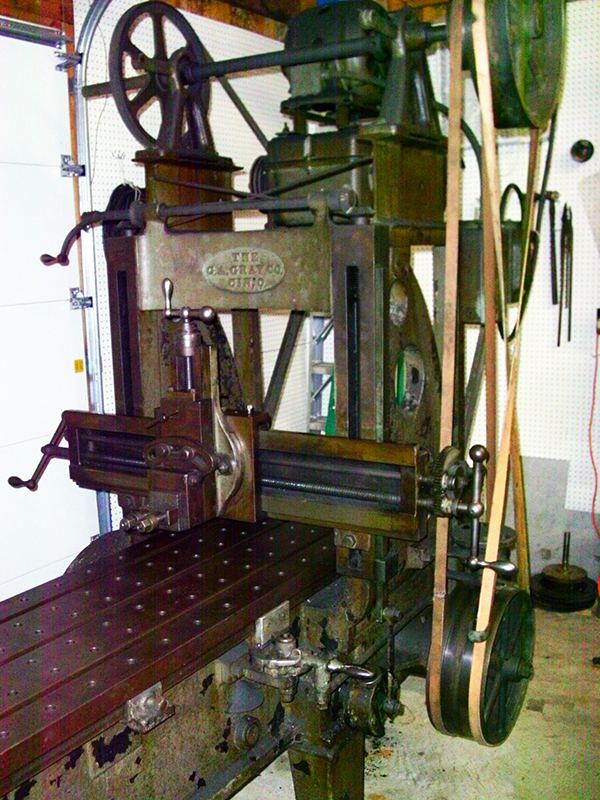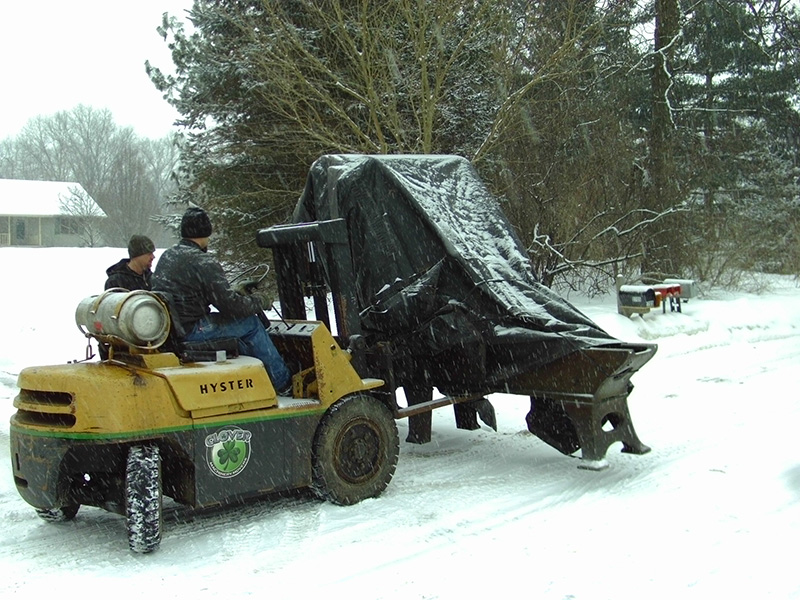
Along the way, I developed an interest in metal shapers, and bought a small Atlas 7. I enjoyed watching the Atlas run so much that nine days later, I bought a 20 inch G&E.
 |
 |
 |
 I have wanted a metal planer for ten years, but I never found one at a time that I had space for one until February 7, 2014, when the right machine appeared on eBay. I bought it immediately, and a few weeks later, in the middle of a March snowstorm, it arrived at my shop. I had it running that day, but have not put it to use yet.
I have wanted a metal planer for ten years, but I never found one at a time that I had space for one until February 7, 2014, when the right machine appeared on eBay. I bought it immediately, and a few weeks later, in the middle of a March snowstorm, it arrived at my shop. I had it running that day, but have not put it to use yet.
This planer is a 22" x 22" model with a 19" x 72" table. I cannot find a nameplate on this planer, but I found the serial number #4552. Reviewing American Planer, Shaper and Slotter Builders (Kenneth L. Cope, 2002, p. 75 & p. 77, fig. 10), I am fairly confident that this machine was made in 1900, plus or minus a year. It was built for overhead line shaft drive, and later converted to use an electric motor. The motor sits on top of a fabricated support and a Lewellyn variable speed drive. These were later, and probably around 1915 (the latest patent date listed on the motor nameplate is in 1913). The drive from the motor to the Lewellyn and from there to the jack shaft (also sitting on the fabricated support) are V-belts, but from there to the planer the drive uses classic flat belts. The different size pulleys on the jack shaft provide for rapid table reverse.
Like most planers, the machine is equipped with power cross feed and power down feed. The table is in very good condition for such an old machine, having only one small groove that appears to have resulted from letting the down feed go too far. Overall, the machine is in very good condition for its age, with only a few minor problems.
I placed these two instructional videos on YouTube showing my initial experience with this planer:
| Belt-shifting Mechanism in Action |
| If you see a blank box below instead of a video, your browser may be stopping you from running scripts, and you should tell it to allow the blocked content: |
What I like
|
What I dislike
|
Problems
|
Other comments
|
‡MechaGodzilla was a machine made in the image of Godzilla. Like the belt shifting mechanism here, MechaGodzilla could perform complex mechanical movements but the mechanism was fundamentally simple.
![]()